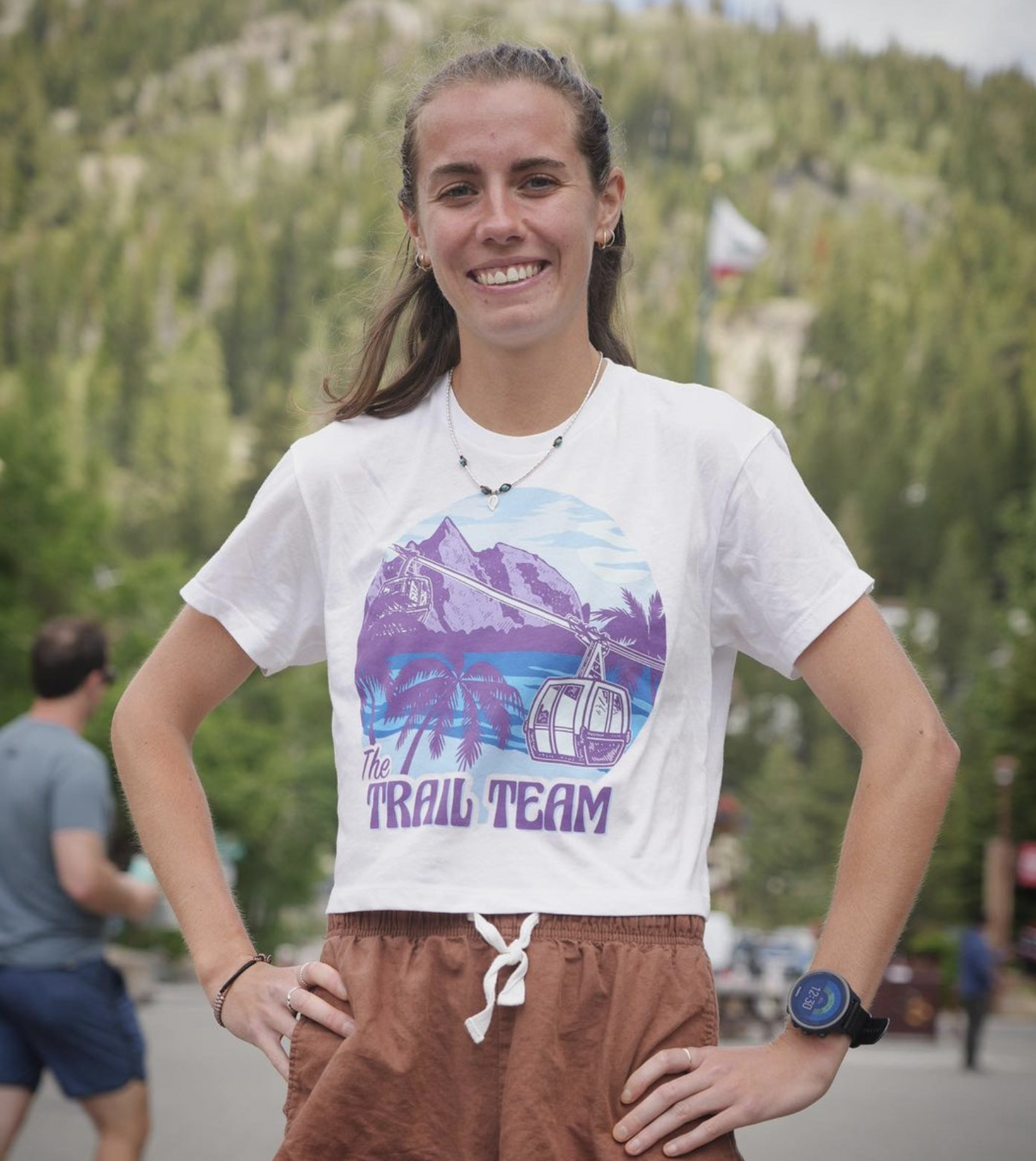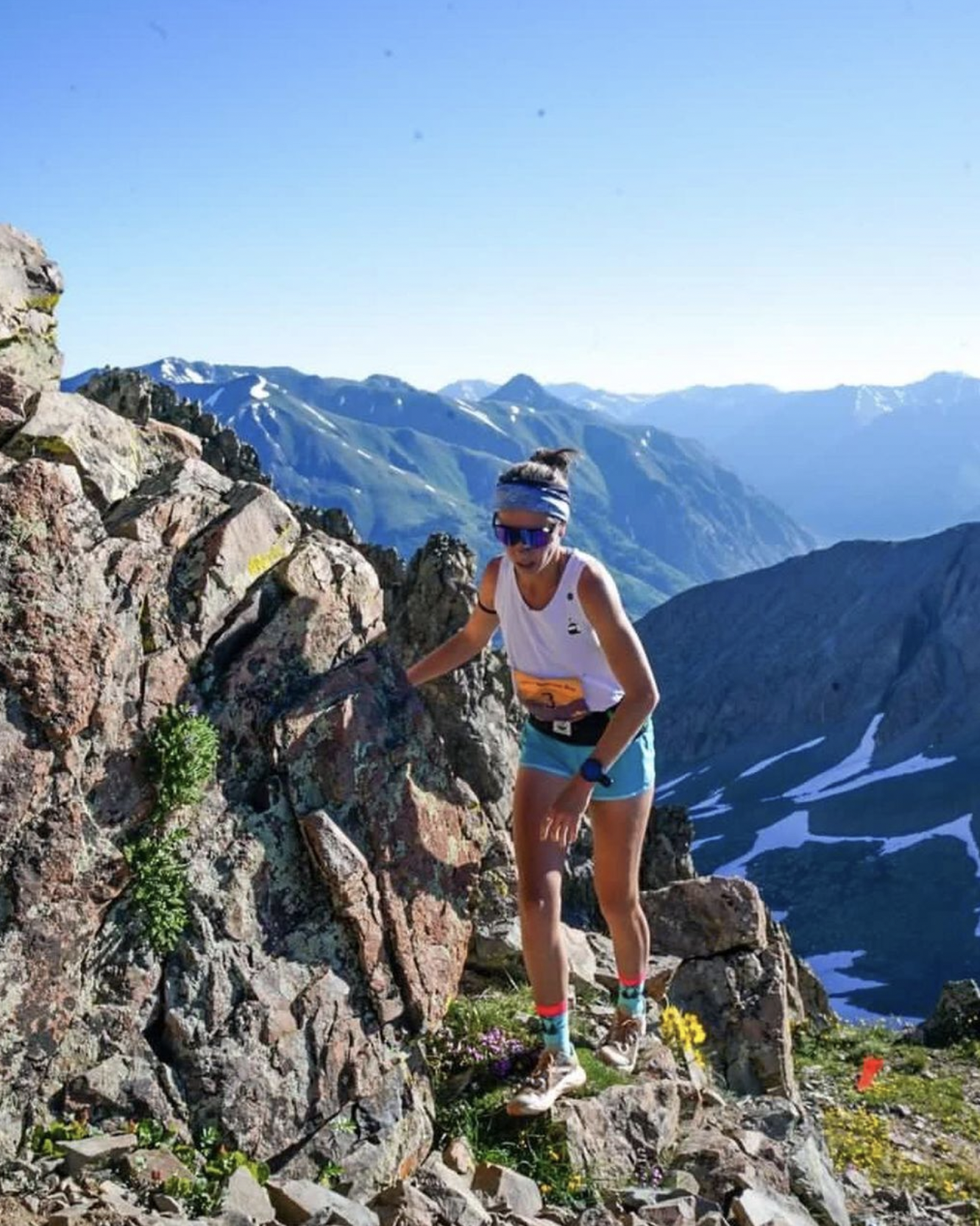The Runner's Resilience: Women Overcoming Injury, Illness, and Pregnancy, featuring Lara Hamilton


Welcome to our first installment of "The Runner's Resilience: Women overcoming injury, illness, and pregnancy". In this series, we aim to inspire, inform, and motivate by highlighting the stories of female athletes who have triumphed over various hurdles to return to their beloved sport of running.
Our inaugural spotlight is on Lara Hamilton, a Boise State University alumni who competed in Track and Cross Country and an exceptional athlete with a remarkable story. Lara's athletic journey took an unforeseen detour when she was diagnosed with a rheumatological condition, Ankylosing Spondylitis (AS), in 2021. Her story is one of resilience, adaptability, and unyielding spirit, as she navigated the challenges of her condition and redefined her relationship with competitive running. Stay tuned as we delve into Lara's journey, highlighting the physical and mental strategies she employed to continue doing what she loves.
- What was the specific injury, and how did it occur? Could you describe the event?
I was diagnosed with a rheumatological condition called Ankylosing Spondylitis in November of 2021. I started having symptoms in 2018 but had no idea what Ankylosing Spondylitis was and just thought I was injured, or had run myself into a big hole. It's really hard to diagnose because it requires looking at MRIs, Symptoms and medical history, tests of flexibility (for things like morning stiffness), blood tests, and medicine trials.
Here are some cool facts drawn from Australian and American data (as I grew up in Australia, it's cool for me to know more about it there too!)
AS affects 1-2% of Australians, that’s around 520,000 people and is 3 times more common in men than women. (Empowered – Arthritis Australia, n.d.) 3.2 Million people in the US have AS. It’s most commonly diagnosed between 15-40, however, 80% of patients will experience symptoms before the age of 30. (Ankylosing Spondylitis: Symptoms, Diagnosis and Treatment, n.d.) On average it takes more than 3 years after symptom onset for the diagnosis to be made in a teenager or young adult.
2. How did you initially respond to the injury both physically and mentally? What were your immediate concerns?
I felt a sense of relief, because I had been in pain for so long, and no one was able to explain it to me. Things suddenly made a lot more sense and I felt like I had an answer and therefore a solid plan of treatment ahead of me. It eliminated a lot of the unknown, which caused me a fair amount of stress and anxiety for a few years when I felt like I was underperforming and picking up abnormal 'injuries'. Now, 2 years later, I can run at around 80% of what I feel I am capable of, and know that the joint pain I feel is inflammatory, and often resolves itself.
3. Can you share your journey of acknowledging the injury and the decision to begin recovery? Was there a turning point that led you to decide to recover and return to your sport?
It took me a while to acknowledge what being diagnosed with AS meant for me in terms of competitive distance running. After a while, the sense of relief wore off, I was ready to start training seriously again. However, I found myself asking, will I be able to achieve at the same level I did before, or will my new 'personal best' be much less?
There wasn't really much else I could do other than try and put one foot in front of the other. I'm a really ‘all-in’ person, and I wasn't going to give up on the consistency I have been building in endurance sports since I was a kid. The best thing I find for dealing with tough times is creating a loose plan. For me that meant educating myself as much as possible, seeking treatment options, doing what I can do each day, and making sure I also had other things to invest my time in. I think putting all your chips in one thing can be risky. It's not to say I'm not dedicated, rather, I seek to find a balance. The mental health and recovery benefits that come with balance make me a better athlete.
4. What kind of medical care did you receive, and how did this help in your recovery?
The primary care provider for someone with Ankylosing Spondylitis is a Rheumatologist. This doctor provides me with treatment options, such as biologics (injections) which I have fortnightly and seem to allow me to function at 80% most of the time. It's hard to get approved for biologics, as they are very expensive (60k + a year) without support from the pharmacy or insurance. This is possible, and I'm lucky enough to have this, but it's a lengthy process. I was diagnosed in November 2021 and wasn't able to obtain the most effective relief for the condition until late September 2022. By December 2022, I was starting to feel a bit closer to my old athletic self. The injections take around 3-6 months to be effective for most.
I also have regular osteopathic treatments, dry needling, and sports massage to keep my joints as healthy as possible.
5. Can you describe your rehabilitation process? What was the most challenging part of this process?
There is no firm 'cure' for the condition where the individual will be back to 100%, however, biologics have made a world of difference compared to the shape I was in before. It's important to have regular physical therapy sessions, with tailored exercises and stretches to help relieve pain and stay as strong as possible.
6. Did you have to alter your training and routine to accommodate your recovery? How did you maintain your fitness levels during this time?
I had to significantly alter my training when the pain became unbearable. I thought I had seriously injured myself around February 2021. I had large amounts of pain in my pelvis, lower back, and high hamstrings, and I wasn't running all that much at the time, nor competing due to COVID. However, after multiple misdiagnoses, we were able to figure out later that year that I had this autoimmune disease, which was the cause of the sudden onset of pain.
Most of 2021 for me included mountain biking, large amounts of pool and open water swimming, strength training, surfing, roller skiing, and bouldering. I tried to keep as active as possible with what I had and built myself cross-training programs so I would invest in the work and hold myself accountable. This was especially tricky in COVID when I conducted almost all my training alone. I find that tricky, I believe to be the best athlete we can be, we sometimes need others to push us, and have that camaraderie with us.
7. How did your diet and nutrition change, if at all, during your recovery? Did you use any specific dietary strategies to aid in healing?
At the time I also found out I have insulin resistance, via a FPG (fasting plasma glucose) test. Now I am even more careful to pick foods which are lower G.I. Growing up in Australia, I'd always eaten Low G.I., preservative-free and healthy, however sometimes the specificity of this type of 'eating' was hard in US college and traveling for competition. My diet wasn't catered to this for quite a few years, so it was good to get a diagnosis and get back on track again.
I'm not so worried about it now as I am so active, it can be hard to keep up with calories and be picky, especially when traveling so much. Most gels don't cater to insulin resistance, so that was something I had to consider for longer races especially.
8. How did you manage the psychological aspects of injury and recovery? Did you work with a sports psychologist or use specific mental strategies?
I went through the full spectrum of emotions! 2021 was the hardest year of my life so far, and often I wasn't doing so well. I didn't have an answer for so many months and was stuck in strict isolation multiple times. Seeing a psychologist became very important, and I have further developed my skills to handle tough situations, and with that built a lot of resilience and perseverance. That really pays off now, in races, my career, and living overseas. Every time I am really struggling, I remember back to a time when it felt like I couldn't go on anymore, and it can't be tougher than that.
9. How did this injury and recovery process affect your personal life and relationships?
There isn't really a 'recovery' for AS. The condition induces a lot of fatigue and can be extremely frustrating at times. Any time I sit in a car for too long, a plane, you name it, I feel a lot of pain through my lumbopelvic region. I love traveling but I hate the transport. That has been the hardest thing. I realize it can be hard for those closest to me, as I am not always at my best when I'm in a lot of pain. I get brain fog, and sometimes I get irritable. I work with a psychologist regularly and am very aware of this, so things are getting better.
10. Can you share any lessons learned or advice for other female athletes who might be going through a similar situation?
It's going to be very hard, but it won't be forever. Getting a treatment plan and beginning to achieve in your sport again will take a lot of patience, discipline, and determination, but you will get there with that tenacity. Surround yourself with a support network, speak kind and encouraging words to yourself, and put your best foot forward on the path to achieving your dreams.
The feeling of being able to achieve at a high level, whilst having a really tough condition is unexplainable. Most of the time people won't have any idea what you are dealing with, but you will race just as well as them, and that will make you proud.
11. How has this experience of injury and recovery changed your perspective toward your sport and your approach to training
Yes, more is not always better. I think people have this idea that our legs know the 'number' of miles or km’s we run. They don't (haha), they understand load, rest, and adaptation. When you put it that simply, you understand that sensible but well-thought-out training will be the best long-term approach. Consistency wins out in the end. It's hard to beat years of quality running. It's often easier to do a lot, burn out, or get injured. Running is really simple in the end.
To learn more about Lara’s journey with AS check out her blog
Connect With Us
See the latest from Fleet Feet Treasure Valley